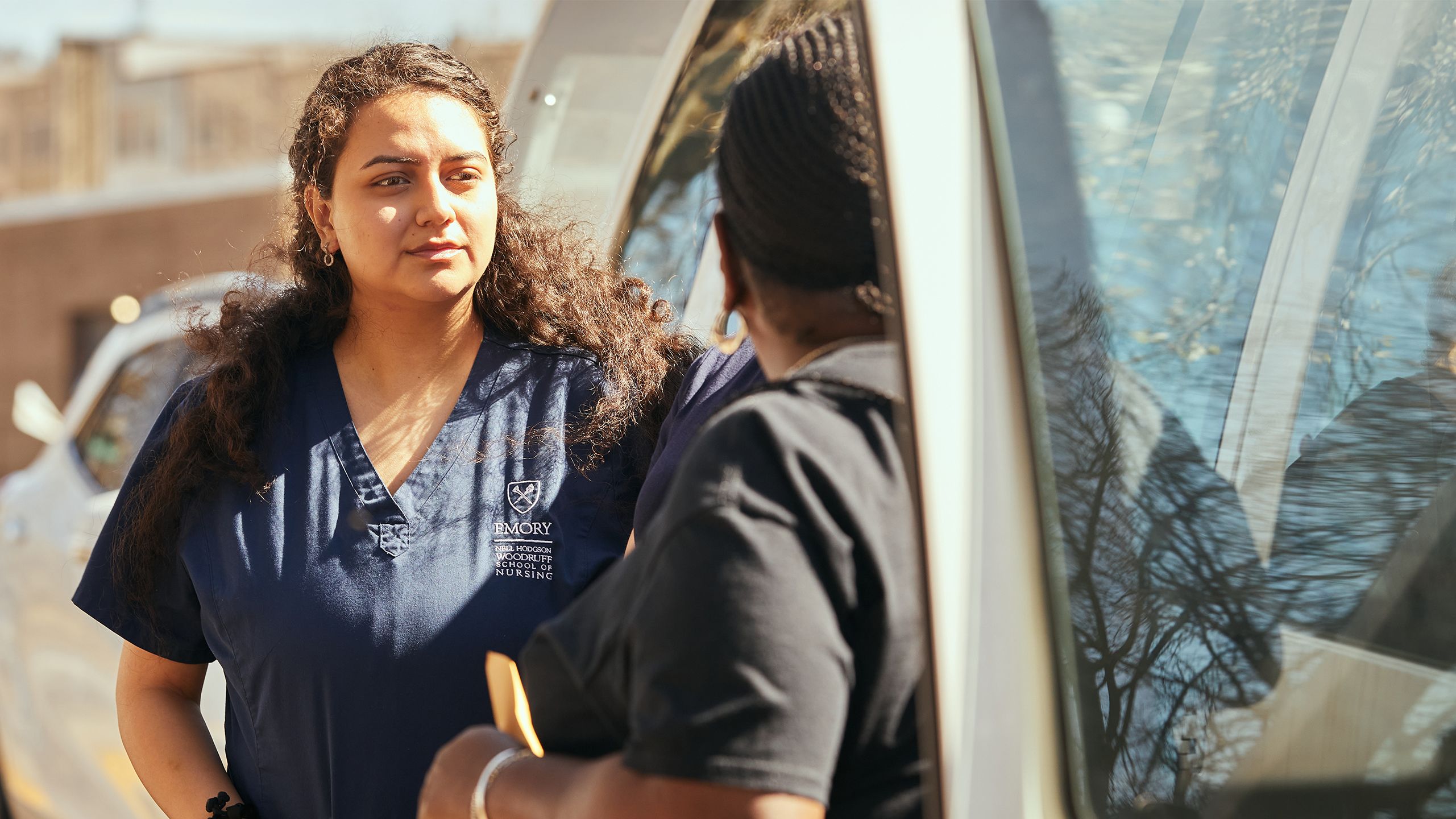Empowering Trusted Messengers to Serve Their Communities
Helping Communities Navigate Resources to Support Better Health

Community health workers are trusted voices in their often-underserved communities. They help their vulnerable neighbors stay healthy by connecting them to well-child care, chronic disease care, mental health and substance use prevention and treatment, transportation, housing and other vital services.
Emory Hillandale Hospital helps train community health workers by providing 80 hours of field placement for participants in the Nell Hodgson Woodruff School of Nursing ARCHWAy program.
"Becoming a community health worker has been a very rewarding experience. We are providing a service that is much needed in the Emory Hillandale Hospital Emergency Department and well received by the community."
The Nell Hodgson Woodruff School of Nursing (SON) is working to expand this critical workforce through a new training program, the Atlanta Region Community Health Workforce Advancement (ARCHWAy) program.
The school provides 12 weeks of training for new and existing community health workers serving vulnerable populations in Clayton, Coweta, DeKalb, Fulton, and Gwinnett counties. This training is coupled with recruitment and retention initiatives such as field placements, tuition support/stipends, job placement, and wrap-around services including early care and education, financial literacy support, and mentoring.
The training features simulated experiences and hands-on learning involving topics such as patient advocacy, community outreach, service coordination, health promotion, emergency response, heart disease, stroke, and HIV prevention and treatment. Participants complete 80 hours of field placement with partners such as AID Atlanta, Boat People SOS, Latina Community Fund, and Emory Hillandale Hospital.
“Community health workers were often invisible before the pandemic, but during COVID-19, they played a vital role in vaccine outreach and building vaccine confidence. Now they are being recognized as a critical part of the public health workforce.”

